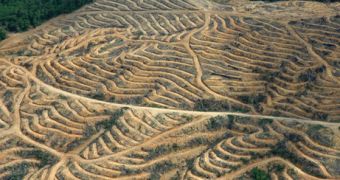Palm oil plantations are back in the spotlight, and not in a good way. Not long after the HSBC was accused of financing companies that chopped down hundreds of hectares of forests just so they could grow lots of oil palms, the RSPO released a report documenting the impact of this industry on natural ecosystems in Indonesia, Malaysia and Papua New Guinea.
The RSPO (Roundtable on Sustainable Palm Oil) maintains that, according to recent investigations, about 3.5 million hectares (8.7 million acres) of forest in said countries were cleared and replaced with oil palm plantations in just two decades, i.e. between 1990 and 2010.
This means that, of all the oil palm plantations established in these twenty years, 37% were set up in areas that used to be forests, the Roundtable details.
The only “good” news is that just 4% of the forests destroyed in order to support the palm oil industry were old-growth ones, Mongabay reports.
The same source tells us that, although there was a time when the recorded rates of deforestation for oil palm plantations declined to a considerable extent, the practice seems to be picking up again.
Thus, it looks like, back in the 1990s, the share of deforestation for oil palm plantations was one of 48%. Fast forward a few years and, between 2001 and 2005, this share was 20%. Between 2006 and 2010, however, it jumped to 36%.
Although just 15% of the peatlands in these parts of the world were found to have been converted into oil palm plantations, specialists say that the phenomenon has had a tremendous ecological footprint, meaning that toying with these patches of land translated into whopping amounts of carbon emissions being released into the atmosphere.
“By 2010, plantations on peat constituted 18% (2.4 million ha) of the spatial footprint of palm oil, but emission from peat fires and peat oxidation were the source of approximately 64% (118 million of CO2 per year) of the total emissions from land use linked to industrial scale oil palm plantations,” reads the RSPO report.

 14 DAY TRIAL //
14 DAY TRIAL //